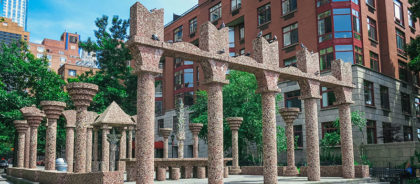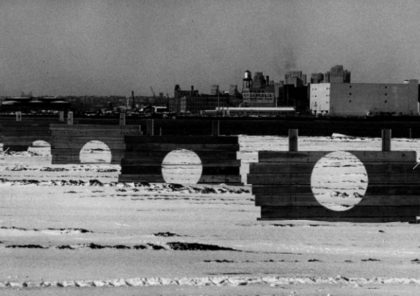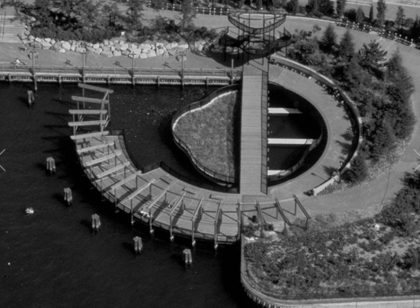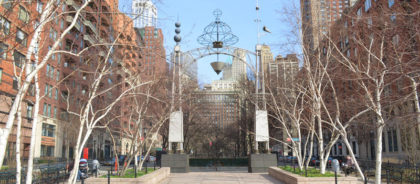Films and discussions with three pioneering artists on Jan. 10
I’m giving this it’s own post since this is one of the more exciting arts events in the neighborhood. I have always loved our own spiral jetty that is the Mary Miss work at South Cove in Battery Park City; she gave me permission to run these pictures of the installation she did in 1973, when Battery Park City was just a swath of landfill covered in sand. It’s hard to imagine, but that piece was on the same site that she did the South Cove installation in 1986.
The talk, Jan. 10 at 6:30 at 6 River Terrace, is called “Pioneers of Public Art, New York in the 1980s and 90s,” and will include documentary shorts about the work of Miss, Ned Smyth and R.M. Fischer, followed by a conversation. (BPCA has also started making videos about the pieces, which I embedded below.)
South Cove by Mary Miss
Considered one of the country’s most significant public artworks, this piece offers an unusual, meditative space along the waterfront. South Cove includes rocks, natural plantings and a wooden jetty at the southern corner of the cove that extends into the Hudson like a pier. Overlooking the stunning view is a raised metal tower, drawing inspiration from a boat and the crown of the Statue of Liberty, which is visible in the distance.

Upper Room by Ned Smyth
Upper Room is a regal, colonnaded court marking the entrance to the Esplanade at Albany Street. The piece evokes dignity and playfulness simultaneously and draws inspiration from the ancient Egyptian temples, offering sanctuary from the surrounding city. The work features red pillars on the sides and inside, a long table is adorned with chess boards and twelve stools.
Rector Gate by R.M. Fischer
Rector Gate is a festive archway marking the intersection of Rector Place and the Hudson River Esplanade. Built of steel, bronze and granite and rising 50 feet high, the gateway brings the romantic grandiosity of New York’s early skyscrapers and engineering feats down to human scale. The arch features seating at its base and is illuminated at night to add to its drama.
















The South Cove video is lovely. Really let’s you know how the folks and artists who lived here shaped our world today.
Thank you for posting this. I’ve often wondered about the source of that inspiration